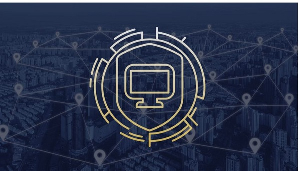


 Global technology companies must therefore protect their technology from a range of malicious uses
Global technology companies must therefore protect their technology from a range of malicious uses
The digital revolution has completely transformed communication globally and made Information Communication Technology an integral part of our daily lives.
By the end of 2023, global mobile users had significantly expanded global connectivity by reaching an estimated 7.21 billion people, representing 90% of the global population.
This increase in digital connectivity has led to numerous benefits. It has democratized access to information, enabling people from all corners of the world to learn, communicate, and collaborate more effectively.
Businesses have leveraged this connectivity to reach wider markets, improve operational efficiency, and provide better customer service. Governments have also utilized digital platforms to enhance public services and engage more closely with their citizens.
However, while this rise in connectivity has brought unprecedented convenience, it has also exposed us to a new era of cybersecurity threats. Statistics indicate that every day, 560,000 new pieces of malware are detected, adding to the over 1 billion malware programs already in circulation. This sheer volume of malware makes it challenging for organizations to keep their systems secure, and many fall victims to ransomware attacks.
Additionally, as smartphone usage has increased, so too have the motives and methods of attacking them. This is because, as more people and devices connect to the internet, the attack surface for cybercriminals has expanded significantly. Where there is money or advantage to be gained, there will be crime – technology is no different; in some instances, it just makes it easier.
Global technology companies must therefore protect their technology from a range of malicious uses. These include data theft, where cybercriminals target sensitive data stored on devices and in cloud services, including personal information, financial details, and intellectual property. It also includes sabotage, where malicious actors can use technology to disrupt or disable critical infrastructure and networks, causing significant damage and disruption.
Often forgotten are weaknesses in human behavior which can make technology an easy target for malicious actors.
Leading technology companies like Huawei have recognized the critical importance of cybersecurity in this age. The company has made significant strides in enhancing its cybersecurity measures to protect its global user base. The company uses a continuous improvement cycle to enhance its cybersecurity capabilities, incorporating lessons learned from audits, reviews, and customer feedback into its processes, standards, and policies.
For example, through its mantra of, “assume nothing, believe no one, and check everything”, the company has developed some of the industry-leading technologies and products in areas like virtual platform security, virtual network defense and the security of cloud computing data to build comprehensive security capabilities in terms of cloud computing.
The firm invests heavily in research and development to create secure and reliable products, with a focus on integrating security features into the design phase to ensure products are secured from the ground up.
The digital revolution is already here, and its landscape demands vigilance, adaptability, and a holistic understanding of emerging technological risks. The most critical defense is a comprehensive approach that recognizes technology's dual nature: a powerful tool that can be both transformational and potentially exploitative.
Organizations and individuals must remain constantly aware of the delicate balance between technological innovation and security.